Planting cilantro seeds and radish seeds, daikon seeds (Growing coriander, radish and daikon)
Growing coriander and radish, and daikon in mulching culture. Last time, we prepared the best soil for cilantro, radishes, and daikon. It’s been about three weeks since then. I think it’s about time for the fertilizer to have blended with the soil, so I want to plant coriander, radish, and daikon seeds.
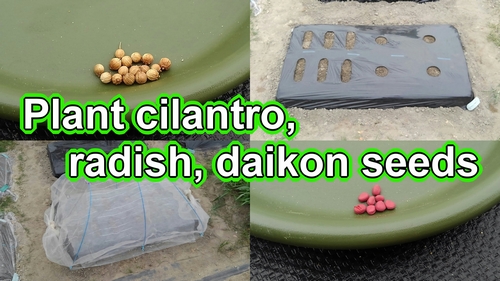
The planting area is divided in half, with cilantro and radishes on one side (60cm x 60cm), and daikon on the other (60cm x 60cm). (60cm=2ft)
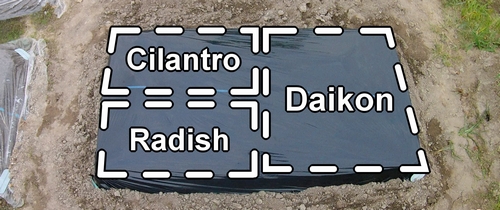
Coriander seeds are of the late-bolting variety. Late-bolting means they are less likely to bolt (produce flowers) early.
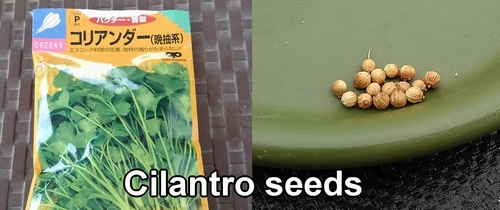
Cilantro seeds have hard shells, so it might be a good idea to soak them in water for a few hours before planting or gently press them against something hard to slightly crack the shells. (You can still plant the seeds as they are, as they will sprout. So, if it’s too much trouble, go ahead and plant them as they are.)
The radish seeds are of the variety called “Colorful Five". It’s an assortment of radishes in five colors, including red, white, purple, and more. It’s fun to imagine what colors you’ll harvest while planting.
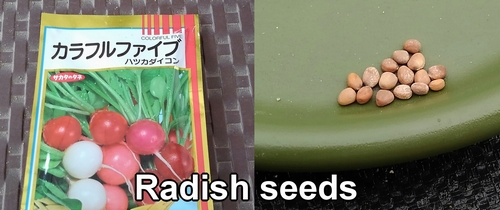
The daikon seeds are of the variety called “Disease-resistant Giant". Daikon is a popular vegetable in home gardens, and there are various varieties, but this one is recommended because it’s a classic and easy to grow. When it comes to home garden daikon, this is the go-to, and it’s one of the most representative varieties.
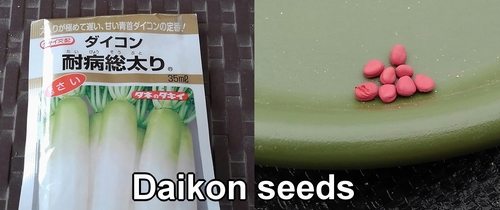
We did the preparation for cilantro, radishes, and daikon cultivation in mid-August. We performed soil preparation, fertilizing, and raised bed.
Sowing coriander, radish, and daikon seeds (Growing cilantro, radish, and daikon from seed)
The planting spots for cilantro and radishes are in six places. Since the cultivation plot is about 60cm x 60cm (2 feet x 2 feet) in size, we’ll make six holes there for planting seeds. The size of the planting holes is approximately 5cm (2 inch) in width and 18cm (7 inch) in length.
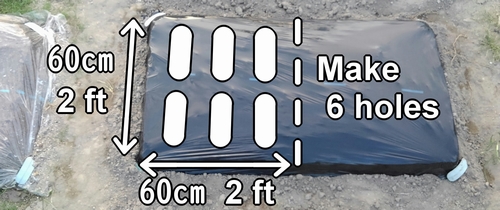
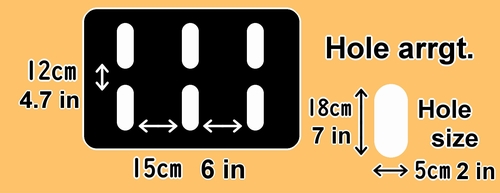
This time, I make the holes myself to match the plot size. Everyone, feel free to make the holes as you like.
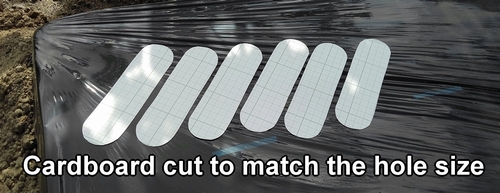
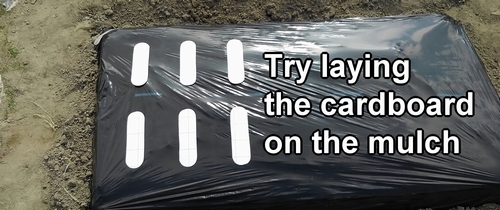
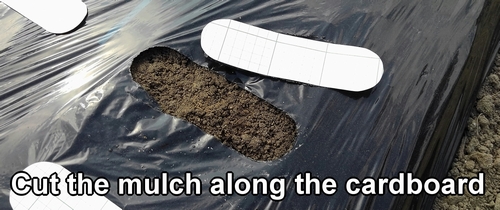
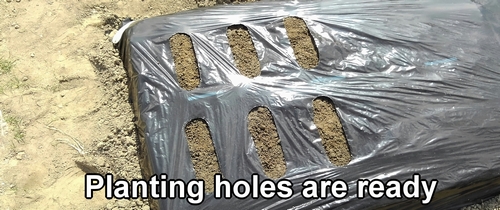
For daikon, make 4 holes in a plot of about 60cm x 60cm (2 feet x 2 feet). (Use a mulch cutter to cut only the plastic on the mulch surface.)
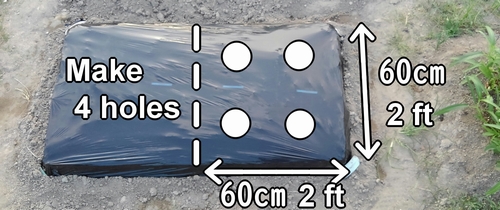
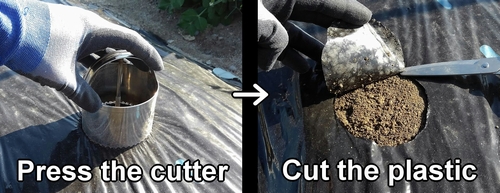
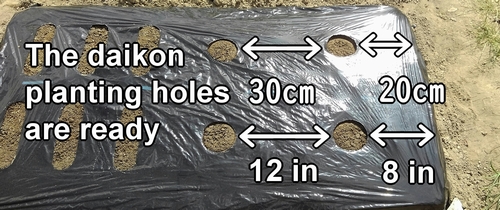
Sow 8 cilantro seeds per hole. Plant 4 radish and daikon seeds per hole.
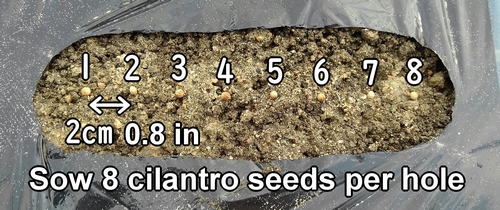
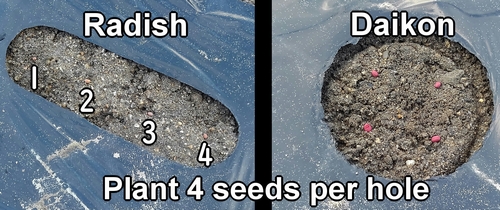
The planting depth is approximately 1cm. Press seeds in to a depth of 1cm with a toothpick or similar tool.
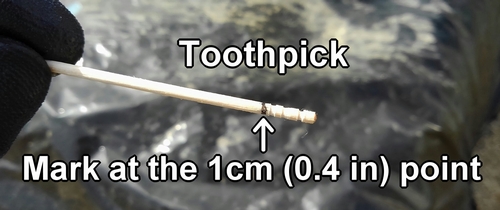
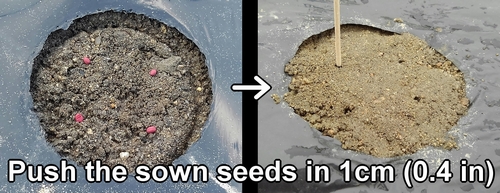
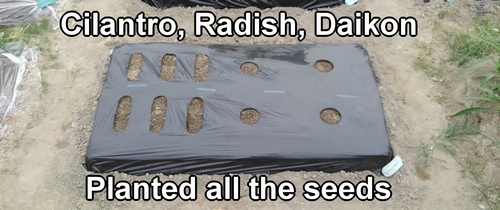
Cover the seeds with soil, press down with your hands, and then put on a non-woven fabric. By placing a non-woven fabric, you can prevent the seeds from drying out, and it also shields them from direct contact with watering or rainwater, protecting the seeds. (When the seeds germinate and grow to a certain extent, remove the non-woven fabric.)
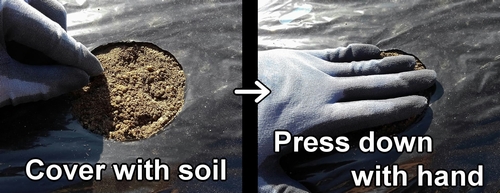
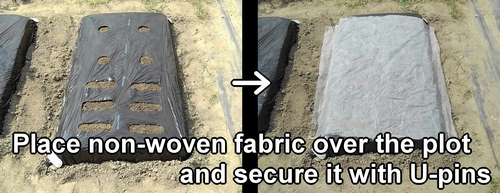
After covering the bed with non-woven fabric, water them until the soil is adequately moist. Be careful not to overwater, as it can cause the cilantro, radish, and daikon seeds to rot.
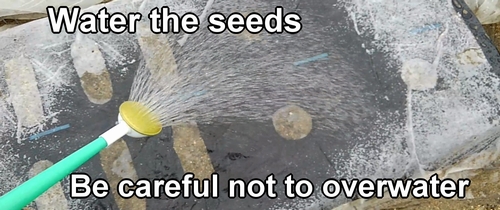
After sowing the seeds, use insect netting to protect against insects
After watering, create a tunnel and install insect netting to prevent pest intrusion. Vegetables from the Brassicaceae family like radishes and daikon are prone to pests, so it’s reassuring to set up a net at the same time as planting the seeds.
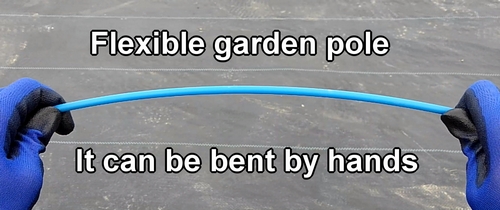
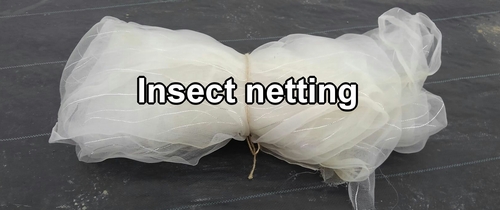
Insert the flexible poles diagonally toward the inside of the bed and set up 3 of them at equal intervals.
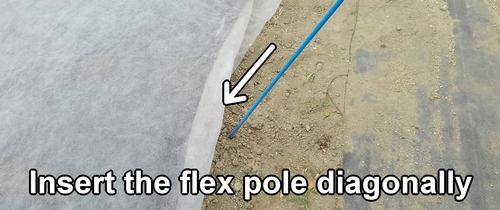
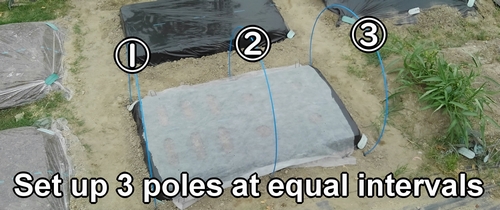
Cover the net over the poles. The edge of the insect netting is tied with knot, and U-shaped garden pin is hooked onto this knot. The garden pin is then inserted into the ground to secure it. Please be careful not to insert the pin directly into the insect netting as it may cause holes.
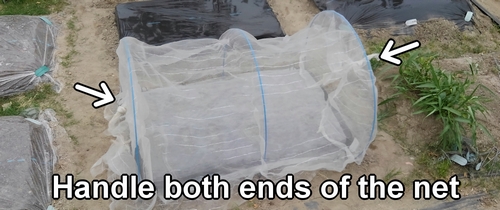
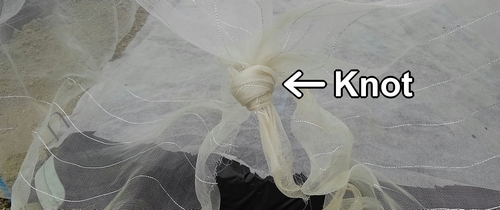
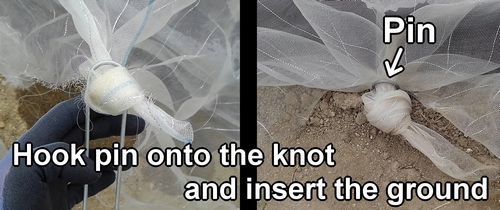
The insect netting on the side of the flexible poles is secured with a tunnel clips. The tunnel clips are fitted onto the flexible poles, sandwiching the insect netting in between. The tunnel clip is used with the projection part facing downwards. (Embed the projection part slightly into the ground.)
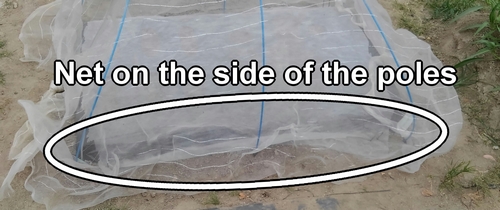
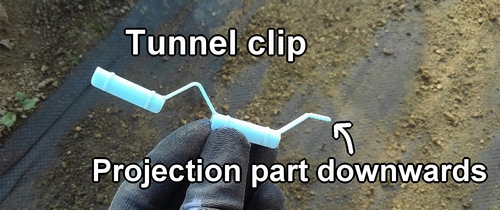
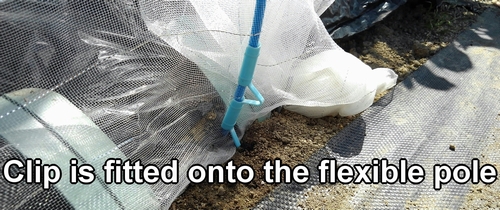
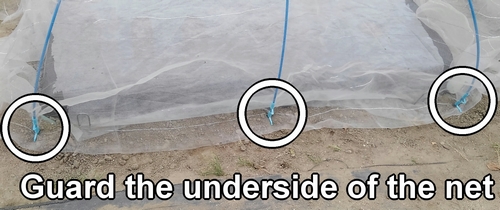
Tie and gather any excess of the insect netting.
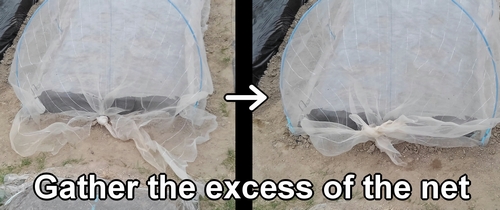
Secure the insect netting with clothespins. With this, the sowing of cilantro, radish, and daikon seeds is complete.
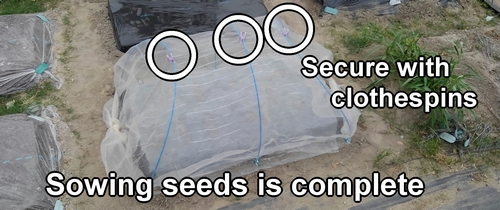
Grow tunnel (garden grow tunnel) is often used for growing autumn and winter vegetables. It’s useful for pest and cold protection, so it’s good to remember. The way to make a cultivation tunnel is also introduced in this article.
Following is the video for how-to. English subtitles are available.
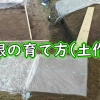
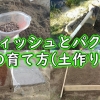
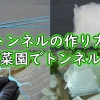

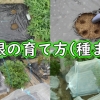
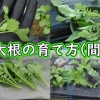

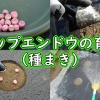




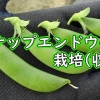

ディスカッション
コメント一覧
まだ、コメントがありません